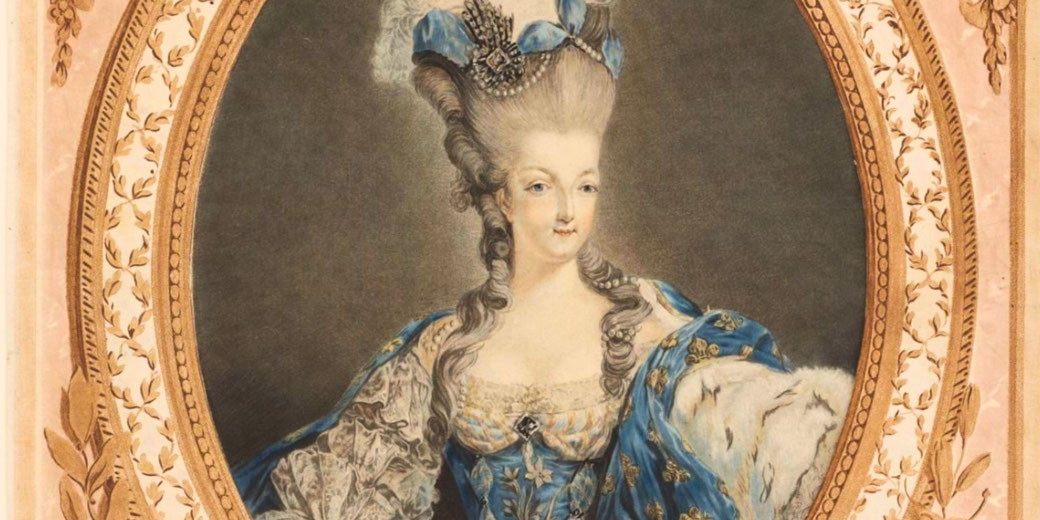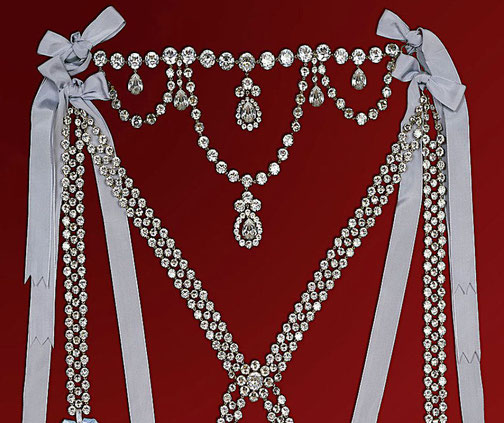How a scandalous affair about a diamond necklace brought down the French monarchy

A glittering necklace worth a fortune led to one of the most notorious scandals in French history. In 1785, France was a nation on the edge of revolution.
The lavish spending of the monarchy and the stark inequality between the rich and poor created a volatile atmosphere.
But a very public trial brought to light forged letters and a person who had been impersonating the queen, and a daring brazen deception.
It would become the centre of criticism of a decadent royal court and the lengths to which individuals would go for wealth and influence.
The mysterious woman at the heart of the scandal
The key player in the drama that was to soon unfold was a minor noblewoman called Jeanne de La Motte. She was born on July 22, 1756, into a family with noble lineage but financial struggles.
Her full name was Jeanne de Saint-Rémy de Valois, but she claimed descent from the royal Valois family. Despite her noble blood, her father, Jacques de Saint-Rémy, struggled to provide for the family, which led to a life far removed from the opulence she would later crave.
As a young woman, Jeanne sought to escape her destitute circumstances through an advantageous marriage. To this end, in 1780, she married Nicolas de La Motte, a soldier of similar minor nobility, but their union did not bring the wealth she desired.
So, Jeanne turned to schemes and deceit to try and elevate her social standing. By 1783, she had moved to Paris, where she used her charm to ingratiate herself into some influential circles in French society.
With her husband’s support, she devised increasingly bold plans to secure wealth and status. By 1784, Jeanne had become involved with Cardinal de Rohan.
He was a high-ranking clergyman whose ambitions often led him into precarious situations. Known for his extravagant lifestyle, Rohan had fallen out of favor with Marie Antoinette due to past indiscretions.
However, he was desperate to regain his standing the royal court of the French King Louis XVI. Recognizing his desperation, Jeanne de La Motte saw an opportunity to exploit his gullibility.
As a result, she convinced him that she could facilitate his reconciliation with Queen Marie Antoinette. And it all revolved around a particular piece of expensive jewelry.
The lavish diamond necklace
The diamond necklace at the center of this scandal was a masterpiece of opulence and ambition. Comprising 647 diamonds, it weighed over 2,800 carats and cost an astonishing 1.6 million livres.
The jewelers Boehmer and Bassenge, who had created the necklace, hoped that it would be purchased by King Louis XV for his favorite mistress, Madame du Barry.
However, the king died before he could complete the transaction, which left the jewelers in financial distress.
By 1785, the necklace had remained unsold for years. Consequently, Boehmer and Bassenge were desperate to find a buyer who could afford such an extravagant piece.
Hearing of their plight, Jeanne de La Motte saw her opportunity.

How everyone was tricked
With the help of her husband, Nicolas de La Motte, and other accomplices, she devised a plan centered around the necklace.
The scheme began to unfold in early 1785 when Jeanne de La Motte convinced Cardinal de Rohan that Queen Marie Antoinette wanted the diamond necklace.
She forged letters purportedly from the queen, expressing a secret desire to purchase the necklace discreetly. Using these letters, Jeanne manipulated Rohan into acting as an intermediary.
In May 1785, she arranged a clandestine meeting in the gardens of Versailles, where Rohan believed he was meeting a representative of the queen.
As a result of the discussion, he agreed to purchase the necklace from the jewelers Boehmer and Bassenge on behalf of the queen.
By August 1785, the jewelers, trusting Rohan's assurances that the queen would send payment once she had the necklace, handed over the extravagant piece to him. Rohan then passed it on.
Once in possession of the necklace, Jeanne wasted no time. She and her accomplices dismantled it and sold the diamonds individually across Europe.
Using the proceeds of the sale, Jeanne and her husband finally got the wealth they had always desired.
As weeks passed and no payment was received, Boehmer and Bassenge grew increasingly anxious. On August 15, 1785, the situation escalated when they confronted Marie Antoinette directly.
They sought the 1.6 million livres owed for the diamond necklace. The queen, obviously unaware of the scheme, was shocked and denied any knowledge of the transaction. Suspicions began to grow.
The very public and humiliating trial
At this point, the queen was outraged and, on the same day, Cardinal de Rohan was arrested at Versailles in front of the entire court.
The affair quickly became a public sensation, with widespread speculation and gossip about the roles of those involved.
To uncover the full extent of the conspiracy, an investigation was launched, which revealed the involvement of Jeanne de La Motte.
Jeanne, along with those who had aided her, was soon arrested. As was to be expected, it drew intense media attention.
By the time the trial commenced in May 1786, public interest had reached a fever pitch, with widespread speculation about the outcome.
The court proceedings took place at the Palais de Justice in Paris. At the heart of the trial were Jeanne de La Motte, Cardinal de Rohan, and their accomplices, all facing severe charges.
During the hearings, Rohan maintained his innocence, claiming he believed he was acting on behalf of the queen. He presented the forged letters and recounted the secret meeting in the gardens of Versailles.
However, his defense struggled to convince the onlookers, as his credibility had already suffered significantly.
On the other hand, Jeanne de La Motte faced damning evidence. She was accused of masterminding the entire scheme to defraud the jewelers and tarnish the queen’s reputation.
Through a barrage of written letters, witnesses, and circumstantial evidence, the prosecution built a compelling case against her.
Nevertheless, Jeanne’s defiant demeanor and elaborate lies added drama to the trial. Despite her best efforts, Jeanne was exposed as the real mastermind behind the scheme.
Finally, on May 31, 1786, the court delivered its verdicts. Cardinal de Rohan was acquitted of all charges, a decision that surprised many.
However, his acquittal did not restore his reputation, which remained forever tarnished. Conversely, Jeanne de La Motte was found guilty of fraud and theft.
The court sentenced her to life imprisonment and publicly flogged her before branding her shoulders with a hot iron.
The dramatic impact on Marie Antoinette
The Diamond Necklace Affair had a devastating impact on Marie Antoinette's reputation. Public opinion had already been turning against her, which had been fueled by perceptions of her extravagant lifestyle and the fact that she was a foreign princess of one of France’s traditional enemies: Austria.
The scandal only intensified these negative views. It painted her as a manipulative and deceitful figure. Even after the completion of the trial, many common French people believed she was complicit in the scheme, despite her repeated denials.
As much as she could, Marie Antoinette maintained her innocence, but the damage was already done. Growing public distrust undermined her position and the monarchy itself. With each passing day, the queen found it harder to escape the shadow of suspicion.
By associating her with a fraudulent scheme, the scandal had provided her detractors with a potent symbol of royal corruption.
By the time the trial concluded in May 1786, Marie Antoinette's image had suffered irreparable harm. The queen, once seen as a glamorous figure, now embodied the perceived excesses and failings of the monarchy.
Subsequently, the Diamond Necklace Affair contributed significantly to the growing unrest that would culminate in the French Revolution.
In this atmosphere of distrust and dissatisfaction, the monarchy’s fall became increasingly inevitable.
What do you need help with?
Download ready-to-use digital learning resources
Copyright © History Skills 2014-2025.
Contact via email
With the exception of links to external sites, some historical sources and extracts from specific publications, all content on this website is copyrighted by History Skills. This content may not be copied, republished or redistributed without written permission from the website creator. Please use the Contact page to obtain relevant permission.





